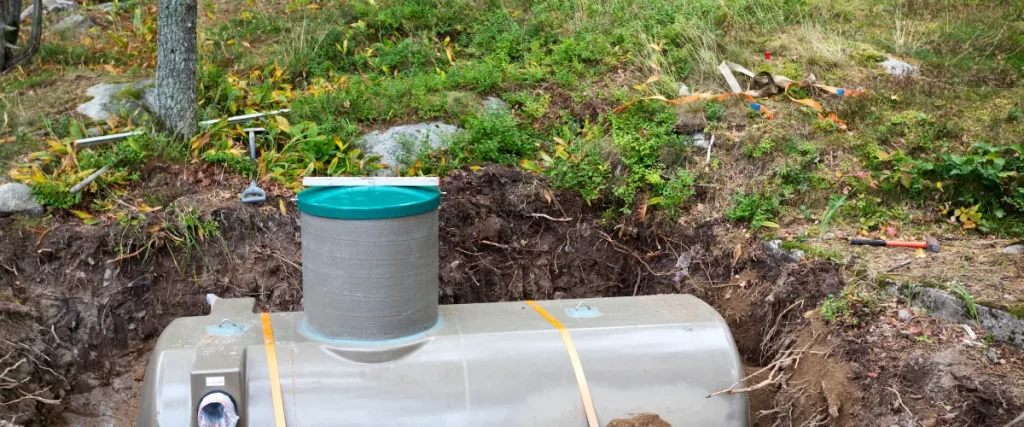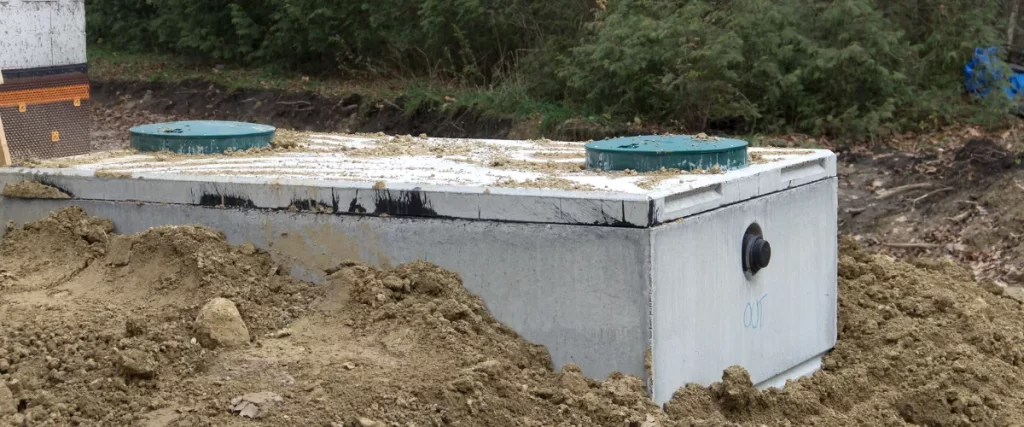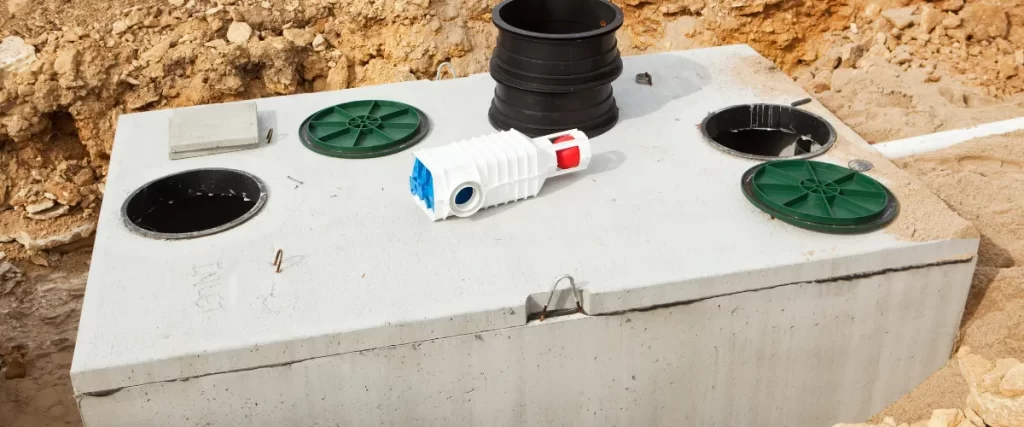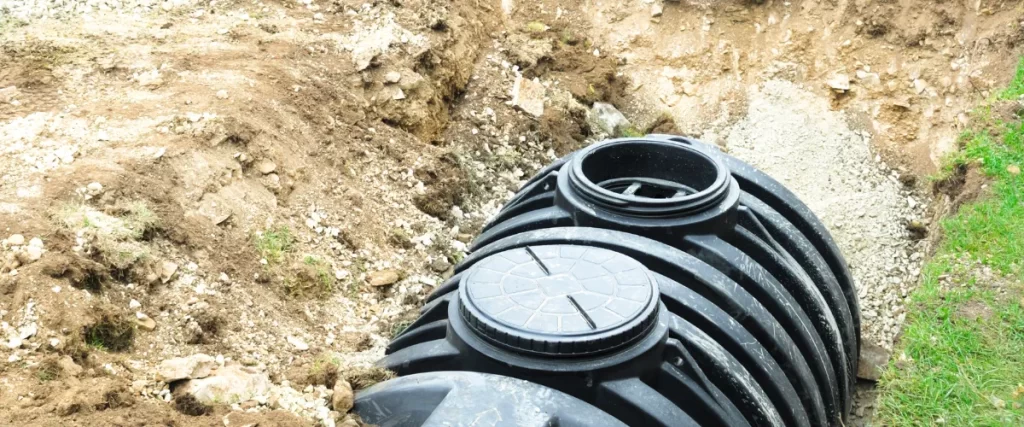Green Valley Ranch is known for its beautiful landscapes and comfortable living, but like any other region, its unique climate plays a significant role in the performance and longevity of septic systems.
For homeowners in this area, understanding how seasonal weather patterns and local environmental conditions affect septic systems is key to maintaining a healthy, efficient wastewater treatment process and avoiding costly repairs.
In this blog post, we’ll explore the various ways Green Valley Ranch’s climate can impact septic system longevity, review the most common challenges, and offer practical tips for mitigating potential issues.

Understanding Green Valley Ranch’s Climate
Green Valley Ranch enjoys a moderate climate with distinct seasonal changes that bring both warm summers and cool winters, along with periods of heavy rainfall and occasional dry spells. These fluctuations can have a pronounced effect on the performance of septic systems. Here are some climate characteristics in Green Valley Ranch that are particularly influential:
- Temperature Variations:
The region experiences warm summers that encourage bacterial activity in septic systems, but cooler winter temperatures can slow down the decomposition process.
- Precipitation Patterns:
Green Valley Ranch sees its share of heavy rainstorms, especially during spring and early fall, which can lead to increased water inflow into septic systems. Conversely, extended dry periods may affect the soil’s ability to naturally absorb and filter effluent.
- Seasonal Transitions:
The shift between seasons brings challenges such as freeze-thaw cycles in winter and sudden snowmelt in spring, both of which can impact soil structure and the integrity of septic drain fields.
Understanding these factors is the first step in appreciating how they influence septic system performance over time.
Impact of Temperature on Septic Systems
Temperature plays a crucial role in the microbial processes that break down waste in septic tanks. In Green Valley Ranch, the range of temperatures throughout the year can either enhance or hinder these processes.
Warm Summers
During the summer months, warmer temperatures promote the growth of beneficial bacteria that break down organic matter in the septic tank. This heightened microbial activity is essential for the proper functioning of the system, as it reduces the accumulation of solids and helps maintain balanced effluent levels. However, extremely high temperatures—especially when combined with drought conditions—can lead to excessive evaporation and reduced water levels in the tank, potentially upsetting the balance required for optimal bacterial performance.
Cool Winters
On the other hand, the cooler winter months in Green Valley Ranch can slow down bacterial activity, leading to a decrease in the breakdown of waste. When temperatures drop too low, the septic tank’s contents may not decompose as efficiently, which could cause an increase in sludge buildup over time. Additionally, if the ground freezes, the soil’s permeability can be reduced, affecting the performance of the drain field. Frozen soil may temporarily block the natural absorption process, leading to back-ups or slow drainage.
The Effects of Precipitation and Soil Moisture
Precipitation is another key factor influencing septic system longevity. Green Valley Ranch experiences periods of heavy rainfall as well as drier spells, both of which can affect the system in different ways.
Heavy Rainfall and Saturated Soils
When heavy rain falls, the ground can become saturated, reducing the soil’s capacity to absorb effluent from the septic system. This situation can lead to surface pooling or even backflow, potentially causing system overload and damage. High moisture levels in the soil can also interfere with the proper functioning of the drain field by reducing the efficiency of the percolation process, which is vital for treating and dispersing wastewater.
Dry Spells and Reduced Absorption
During extended dry periods, the soil in Green Valley Ranch can become compacted and less permeable, which might seem beneficial at first glance. However, overly dry soils may not adequately support the drain field’s ability to filter and treat wastewater. When the soil becomes too dry, the natural microbial processes that help break down contaminants can slow down, and the overall treatment process may be less effective. Additionally, abrupt transitions from dry to wet conditions—such as those seen during sudden thunderstorms—can exacerbate issues, as the soil may not adjust quickly enough to the rapid change in moisture levels.
Seasonal Challenges: Freeze-Thaw Cycles
One of the most significant challenges for septic systems in regions with variable climates like Green Valley Ranch is the freeze-thaw cycle. This phenomenon occurs when water in and around the septic system freezes during winter and then thaws when temperatures rise.
Impact on Soil Structure
Freeze-thaw cycles can cause significant stress on the soil surrounding your septic system. As water freezes, it expands, potentially causing the soil to shift and crack. When the ice thaws, the soil contracts, which can leave behind voids or channels. These changes in the soil structure may negatively affect the performance of the drain field, reducing its ability to absorb and filter effluent effectively.
Potential Damage to Septic Components
The expansion and contraction caused by freeze-thaw cycles can also put additional pressure on the septic tank and its components. Over time, this can lead to cracks in the tank or in the piping connected to the system, compromising its overall integrity. Regular inspections and maintenance are crucial during these seasonal transitions to catch any early signs of damage before they develop into more serious problems.

How Climate Affects the Drain Field
The drain field is one of the most vulnerable components of a septic system. It is responsible for dispersing and naturally treating the effluent, and its performance is heavily influenced by soil conditions and moisture levels.
Soil Absorption Rates
In Green Valley Ranch, the efficiency of a drain field is largely dependent on the soil’s absorption rate. Soils that are too sandy may allow effluent to pass through too quickly, reducing the time needed for proper treatment. Conversely, clay-heavy soils may absorb water too slowly, leading to potential system backups. Local soil composition, combined with seasonal moisture variations, makes it essential to design the drain field to accommodate these changing conditions.
Drain Field Clogging
Heavy rainfall, combined with freeze-thaw cycles, can contribute to the clogging of the drain field. When excessive water enters the system, solids that should remain in the septic tank can be pushed into the drain field, leading to clogging over time. Regular septic tank pumping and maintenance are vital to preventing solids from entering the drain field and impairing its functionality.
Mitigation Strategies and Maintenance Tips
While Green Valley Ranch’s climate presents several challenges to septic system longevity, there are proactive steps homeowners can take to mitigate these effects.
Regular Inspections and Pumping
One of the most important maintenance tasks is the regular inspection and pumping of the septic tank. By having the tank pumped on a consistent schedule (typically every 3-5 years, depending on usage), you can prevent the buildup of solids that may otherwise strain the system during periods of heavy rainfall or temperature fluctuations.
Proper System Design
Investing in a septic system that is designed specifically for the local climate can make a significant difference. This might include features such as:
- Enhanced Tank Insulation: Insulating the septic tank helps maintain a consistent temperature, supporting bacterial activity during colder months.
- Optimized Drain Field Design: Tailoring the drain field to local soil conditions and anticipated precipitation levels ensures more efficient wastewater treatment and dispersal.
- Freeze Protection Measures: Incorporating design elements that protect against freeze-thaw damage, such as deeper installation or additional drainage measures, can help mitigate winter-related issues.
Water Conservation Measures
Reducing water usage can also extend the life of your septic system. Simple changes, such as installing water-efficient fixtures, fixing leaks promptly, and practicing mindful water consumption, can reduce the overall load on your system. During periods of heavy rain or drought, managing water usage becomes even more critical to prevent system overload and maintain optimal performance.
Landscaping and Drainage Improvements
Improving the overall drainage around your home can lessen the burden on your septic system. Properly grading your yard, installing French drains, and ensuring that gutters and downspouts direct water away from the septic system are all practical steps. Enhancing landscape drainage not only benefits your septic system but also protects your home’s foundation and overall property value.

Key Climate Factors and Their Impact on Septic System Longevity
| Climate Factor | Impact on Septic System | Mitigation Strategy |
| Temperature Variations | Affects bacterial activity and sludge decomposition; extreme cold may slow processes. | Use insulated tanks and regular pumping. |
| Heavy Rainfall | Saturates soil and may overwhelm the drain field; risk of effluent backup increases. | Improve drainage around the property; design optimized drain fields. |
| Dry Spells | Reduced soil moisture can slow microbial treatment and alter absorption rates. | Manage water usage; adjust system design for local soil conditions. |
| Freeze-Thaw Cycles | Causes soil shifting, potential cracking in tanks and pipes; affects drain field performance. | Install freeze protection measures; regular inspections. |
| Soil Composition | Influences absorption rates and system efficiency; varying soil types require tailored design. | Conduct soil tests; design system to match local soil characteristics. |
Working with Local Professionals
Given the complexity of how climate affects septic system longevity, working with local experts is highly recommended. Professionals in the Green Valley Ranch area understand the specific challenges posed by the regional climate and can design systems that are better suited to these conditions.
They can conduct soil tests, recommend optimal system designs, and ensure that your septic system is installed with the necessary features to withstand seasonal changes.
Local contractors also provide ongoing maintenance services that help detect and address issues early. Their expertise ensures that your system remains compliant with local codes and performs reliably, reducing the risk of environmental hazards and costly repairs.
The Importance of Regular Maintenance
No matter how well your septic system is designed, regular maintenance is crucial for ensuring its longevity. Here are some key maintenance practices that can help offset the impact of Green Valley Ranch’s climate:
- Scheduled Pumping: Regularly pumping your septic tank helps prevent solids from building up and interfering with system performance. The recommended frequency varies, but a general rule is every 3-5 years.
- Routine Inspections: Periodically inspecting your system allows you to catch potential problems before they escalate. Look for signs of leaks, unusual odors, or sluggish drainage.
- Drain Field Care: Avoid heavy vehicle traffic and excessive landscaping over the drain field. Protecting this area is essential for maintaining efficient wastewater dispersal.
- Seasonal Checks: Before and after major seasonal shifts (e.g., before winter and after spring thaw), conduct a thorough inspection or have a professional assess the system. This proactive approach can help address issues related to freeze-thaw cycles and heavy rains.
Tips for Homeowners in Green Valley Ranch
For residents in Green Valley Ranch, here are some practical tips to help maintain septic system longevity despite the challenges posed by the local climate:
Monitor Water Usage:
Keep an eye on your household water consumption. High water usage can overwhelm your system during heavy rains or extended dry spells. Installing water-efficient fixtures can help reduce stress on the septic system.
Schedule Regular Professional Inspections:
Engage a local septic system specialist to conduct annual or biannual inspections. Their expertise can help identify potential issues early, allowing you to make timely repairs.
Invest in Quality Upgrades:
Consider investing in system enhancements like insulated septic tanks or advanced drainage solutions. While these upgrades may have a higher initial cost, they can extend the life of your system and prevent expensive repairs in the future.
Maintain Proper Landscaping:
Ensure that your property is properly graded to direct rainwater away from your septic system. Regularly clean gutters and downspouts, and consider installing additional drainage solutions if needed.
Plan for Seasonal Variations:
Be mindful of how different seasons affect your septic system. For example, after a heavy rain or during a rapid snowmelt, check for any signs of pooling or backup. Early intervention can prevent minor issues from becoming major problems.

Long-Term Benefits of a Well-Maintained Septic System
Investing in proper septic system design and maintenance has long-term benefits that extend beyond immediate repairs. A well-maintained septic system:
- Enhances Property Value:
Homes with modern, efficient, and compliant septic systems are more attractive to buyers. A reliable system can be a key selling point, adding to the overall market value of your property.
- Protects the Environment:
Efficient wastewater treatment prevents contaminants from seeping into the groundwater or local water bodies. This environmental protection is especially important in areas like Green Valley Ranch, where natural beauty and water quality are highly valued.
- Reduces Operational Costs:
By preventing system failures and minimizing the need for emergency repairs, a well-maintained septic system can lower your overall maintenance costs. Regular upkeep is an investment that pays off over time by avoiding the high costs associated with system replacement or major repairs.
- Improves Health and Safety:
A properly functioning septic system minimizes the risk of wastewater backups, which can lead to unpleasant odors and potential health hazards. Keeping your system in good condition contributes to a cleaner, safer home environment.
Best Septic System Manufacturers
When choosing a septic system, it’s crucial to consider reputable manufacturers known for their quality and reliability.
- BioMicrobics: Renowned for innovative, eco-friendly septic solutions that prioritize water treatment efficiency and environmental sustainability.
- Orenco Systems: A trusted name offering advanced, durable septic products tailored to residential and commercial wastewater management needs.
- Delta Environmental: Provides high-performance septic systems, well-known for their reliability and easy maintenance in diverse applications.
- Norweco: Specializes in durable, long-lasting systems with modern designs to meet varying wastewater treatment needs efficiently.
- Zoeller: Offers robust and cost-effective solutions, focusing on high-quality products that ensure long-term septic system reliability.
Frequently Asked Questions
1. How do I determine which septic system is right for my property?
The best septic system for your property depends on factors such as the size of your household or business, soil type, and local regulations. Consulting with a professional who can assess your specific needs is essential.
2. What maintenance is required for a septic system?
Regular maintenance involves pumping the tank every 3-5 years, routine inspections, and ensuring no harmful substances are drained into the system. Some systems may have additional maintenance requirements based on their design.
3. What are the advantages of advanced septic systems like those from Delta Environmental and Norweco?
Advanced systems often offer greater efficiency, lower maintenance needs, and improved environmental safety. Delta Environmental focuses on performance and reliability, while Norweco emphasizes durable, modern designs.
4. Are there cost-effective septic system options available?
Yes, companies like Zoeller provide budget-friendly solutions without compromising quality. Their robust systems are designed to ensure long-term reliability at a competitive cost.
5. Can these septic systems handle commercial wastewater needs?
Absolutely. Many of the systems offered by the mentioned companies are tailored to handle both residential and commercial applications, effectively managing higher wastewater volumes.
Final Thoughts
Green Valley Ranch’s unique climate presents both challenges and opportunities for septic system longevity. Temperature fluctuations, heavy rainfall, dry spells, and freeze-thaw cycles all play significant roles in determining how well your septic system performs over time.
However, with careful planning, regular maintenance, and the expertise of local professionals, you can mitigate these challenges and ensure that your system remains reliable and efficient for years to come.
Remember, the longevity of your septic system is not solely determined by its design but also by how well you adapt to the seasonal changes and weather patterns in Green Valley Ranch. Take the time to plan, inspect, and maintain your system regularly, and consider working with local experts who can tailor solutions to your property’s unique needs.
In the long run, these efforts will save you money, prevent environmental hazards, and ensure that your home’s wastewater treatment system continues to function optimally.
Trust Our Experienced Professionals
Our team has years of experience in septic system maintenance and optimization. Work with the best to save money and ensure quality results. Contact us at (720) 507-4076 to get started!
